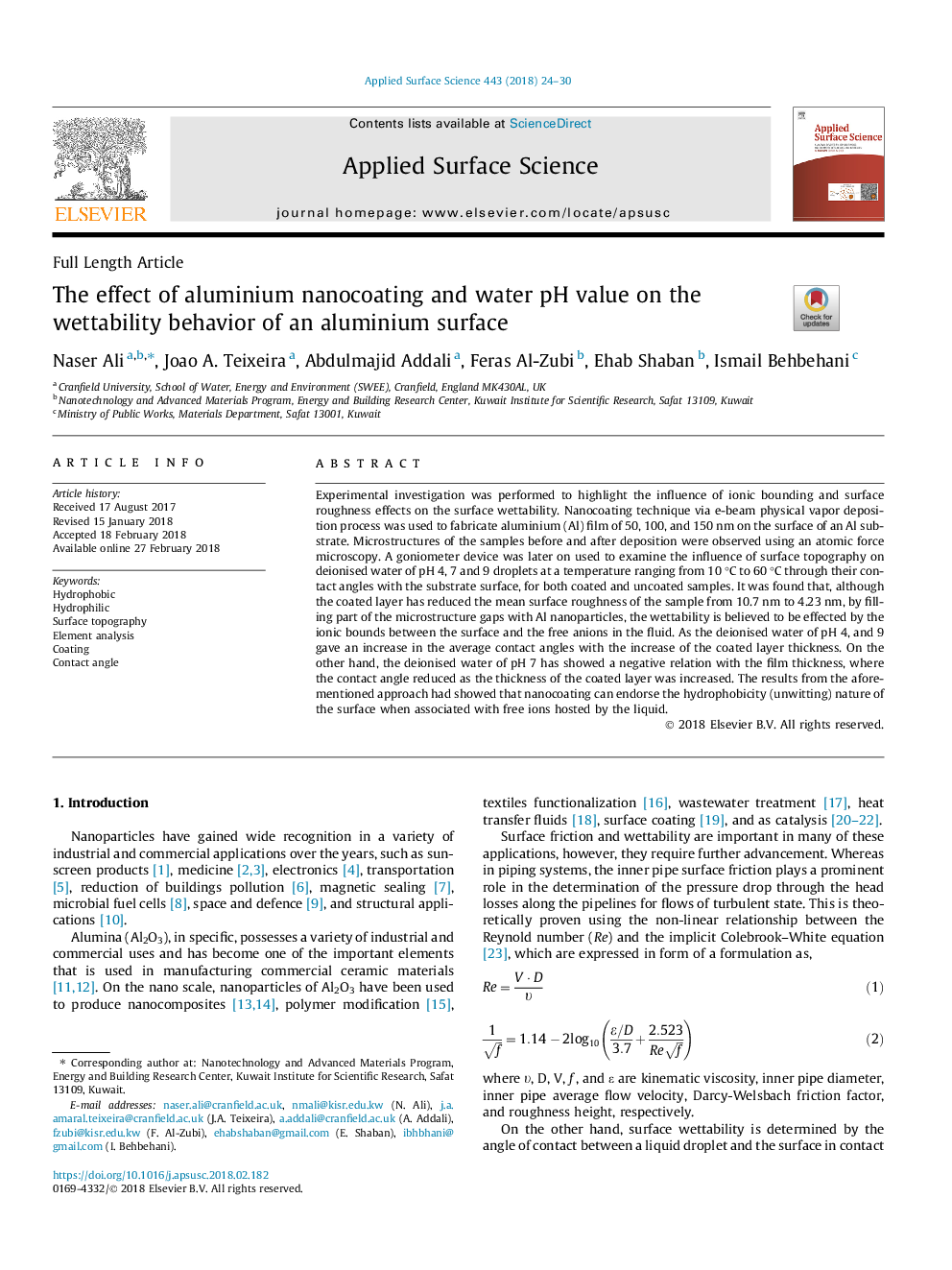| Article ID | Journal | Published Year | Pages | File Type |
|---|---|---|---|---|
| 7834436 | Applied Surface Science | 2018 | 7 Pages |
Abstract
Experimental investigation was performed to highlight the influence of ionic bounding and surface roughness effects on the surface wettability. Nanocoating technique via e-beam physical vapor deposition process was used to fabricate aluminium (Al) film of 50, 100, and 150â¯nm on the surface of an Al substrate. Microstructures of the samples before and after deposition were observed using an atomic force microscopy. A goniometer device was later on used to examine the influence of surface topography on deionised water of pH 4, 7 and 9 droplets at a temperature ranging from 10â¯Â°C to 60â¯Â°C through their contact angles with the substrate surface, for both coated and uncoated samples. It was found that, although the coated layer has reduced the mean surface roughness of the sample from 10.7â¯nm to 4.23â¯nm, by filling part of the microstructure gaps with Al nanoparticles, the wettability is believed to be effected by the ionic bounds between the surface and the free anions in the fluid. As the deionised water of pH 4, and 9 gave an increase in the average contact angles with the increase of the coated layer thickness. On the other hand, the deionised water of pH 7 has showed a negative relation with the film thickness, where the contact angle reduced as the thickness of the coated layer was increased. The results from the aforementioned approach had showed that nanocoating can endorse the hydrophobicity (unwitting) nature of the surface when associated with free ions hosted by the liquid.
Related Topics
Physical Sciences and Engineering
Chemistry
Physical and Theoretical Chemistry
Authors
Naser Ali, Joao A. Teixeira, Abdulmajid Addali, Feras Al-Zubi, Ehab Shaban, Ismail Behbehani,
